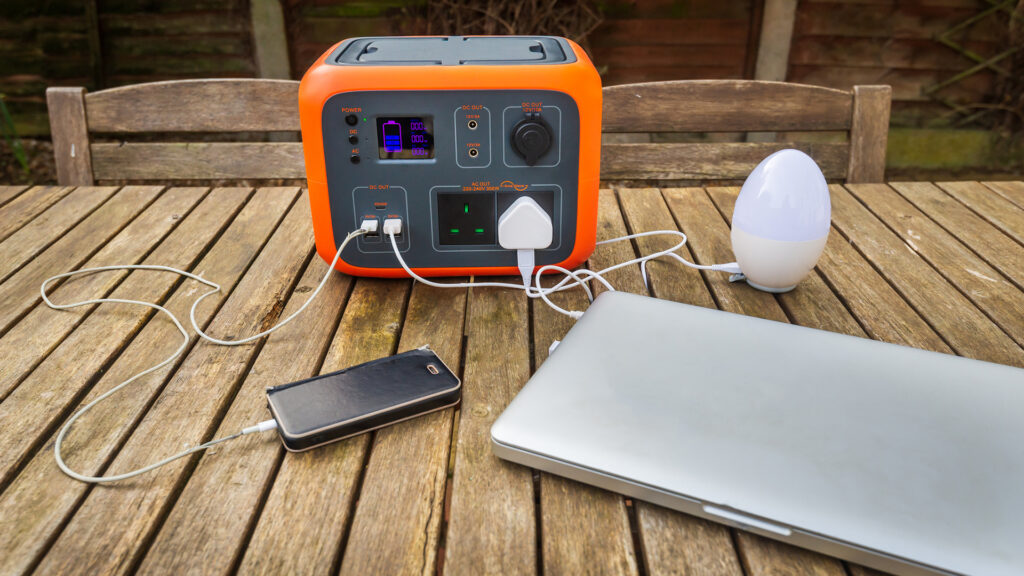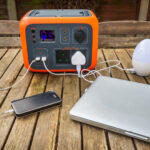An emergency power supply is not something I used to think mattered. Until I needed it.
Do you know the famous Joni Mitchell lyric, “Don’t it always seem to go that you don’t know what you’ve got ‘til it’s gone?” Like so many things in life, electricity and other reliable forms of power are so easy to take for granted that we rarely stop to imagine what life would be like without them.
Two power loss experiences forever changed my perspective on having a reliable emergency power supply. First, after a huge storm, my family and I had to rely on our emergency backup generator for almost a week due to delays in power grid repairs in our area.
Without our generator, I would have had no kitchen appliances, internet, or technology; I would have been unable to work, juice, or prepare most of my meals.
Recently, my home has been undergoing major work to remedy a pervasive mold problem we discovered last fall. Thankfully, we were prepared for intermittent power losses during the ongoing work. I work online daily, so having a reliable emergency power supply is not optional. The peace of mind that comes with a backup energy source is so worth the planning involved.
TOP 5 EMERGENCY POWER SUPPLY TIPS
Everyone has different needs and different means. Not everybody needs a generator large enough to power a home for an extended period, and many may not be able to afford a large haul of heavy-duty emergency power supply products.
But nobody can afford to give no thought to their emergency power supply.
Read below for my top 5 tips for keeping an emergency power supply so that you can choose which products are most relevant for you.
1. Sort Out Your Emergency Electrical Supply
Depending on the energy you need, there are several possibilities for securing an emergency electrical supply. Reviewing several options to compare aspects like energy storage capability, recharging options, and portability can be helpful.
One company I like is Jackery, which offers a range of power stations that can power portable technology devices and appliances. Jackery’s products can be charged via a wall plug-in so that your power station is charged in case of power loss, via a call power adapter for charging on the go, or via high-quality solar panels you can purchase as an add-on to their power station products.
What I love about having all three options to recharge your power station is that these products have you covered in all situations, whether you need to keep your fridge and phone running for a couple of days or during a long-term outage.
At a minimum, you want to be able to power a fridge, a heating element (unless you’re in a tropical climate), devices like smartphones and laptops, and a wifi router if there is a power outage, and Jackery allows you to cover those bases effectively with a device you can carry around with you as needed.
Inergy is another company that makes quality power stations for a range of scenarios so that you can store and maintain electricity in any circumstance.
Uninterruptible power supply (UPS) products can also be an excellent option for shorter-term power interruptions when powering small appliances like internet routers, computers, and other technologies.
To use a UPS, you run your internet wiring through a UPS product so that if the electricity goes out, you receive uninterrupted power and internet service, with no delay before a generator kicks in. If you do sensitive work on computers that cannot be disrupted, this is a great product to have handy. Here’s a helpful article with a few options.
2. Consider Backup Generators
Consider a backup generator for your home for more comprehensive backup energy supplies. These products range from whole-home systems that can power your entire house for an extended period to portable systems.
Unlike the portable power stations listed above, these generators typically run on propane, gasoline, or natural gas. They either require an external fuel supply that you will need on hand or can be connected to your home natural gas or liquid propane supply so that fuel is automatically available when needed.
Check out Home Depot or Lowe’s to compare products that work best for your situation. Bob Vila has a great article on whole-home generators to help determine which product best suits your needs.
If you’re not in the United States, similar products likely exist. Just do a quick internet search to see what is available in your region.
3. Get Organized with Non-Electric Energy Sources
Suppose you already have natural gas lines feeding your stove and oven in your home. In that case, you have a backup for electrical outages (you will just need to light your gas yourself when cooking if the electric lighting device is not functioning). If you don’t, you may want to purchase a propane camping stove with extra propane canisters, an excellent alternative for cooking heat during a disruption in electric service.
Another backup heat source is a wood-burning stove. Usually, I don’t recommend burning wood under any circumstances. However, it is an effective heat source for cooking and providing body warmth in an emergency. Do a quick internet search to find various options, both outdoor and indoor.
4. Stock Up on Light Sources
This is the category that most people think of first when considering emergency power supply basics – these alternative light sources are simple, cheap, and easy to store.
- Candles – Stick to 100% pure beeswax candles with 100% organic cotton wicks for the cleanest and healthiest option. Be sure you have enough to light an entire room for extended periods.
- Flashlights – There are endless options for flashlights, from keychain-sized lights to hand-crank flashlight/radio combinations to wide-beam halogen high-power options. My Amazon store has a few options, but the most important thing is to be sure you have a reliable, durable flashlight with plenty of batteries to power it if they’re required.
- Backup light bulbs – You can purchase bulbs that charge themselves while your lights are on and can function if you lose power.
- Battery-powered lights and light bulbs – You can also purchase plenty of battery-powered light options and even light bulbs, including products like camping lanterns and headlamps, which are all helpful in an emergency or extended power outage situation.
5. Get Smart with Batteries and Solar Power
There are wonderful emergency power supply products on the market right now that allows you to quickly recharge your handheld devices with a rechargeable battery that can either be charged in an electrical socket or with portable solar panels, distributing the charging you need to do using solar power (which takes time).
Also, great solar-powered lamps and lights are available, removing the need for other fuel sources. Solar products and solar energy are finally getting cheaper, so don’t assume you can’t take advantage of these products regardless of your financial circumstances.
When it comes to batteries, be sure you’ve got a solid stock of all the batteries you will need for essentials like flashlights, radios, and technology.
Are you looking for more ideas for emergency preparedness products? Visit my Amazon store to browse some of my favorite products!
Want to dive deeper into emergency preparedness?
Join me in my Intuitive Healing Community membership community for the month of April this year, where we will spend all month discussing emergency preparation and how to be ready for anything. Learn more below!
BONUS EMERGENCY POWER SUPPLY TIPS
To state the obvious, heat sources are essential during winter for those who live in non-tropical climates. Inversely, portable fans might be crucial in certain climates to keep cool.
Don’t forget to build this into your emergency power supply plans. I recommend that everyone keep at least one heating element in their emergency backup supplies capable of adequately heating one room in their home. If you have a large family, you may want to ensure you can heat at least two rooms. Stocking up on other warming supplies like sleeping bags and hot water bottles to pull out in the case of a winter emergency is also a good idea.
If you have a central air and heating system like an HVAC system, it’s best to keep a heat source that is not centralized because centralized systems use a lot of power. Running an HVAC-style system without a full-size backup generator would be challenging.
MORE RESOURCES
I say this in every blog in my emergency preparedness series because it bears repeating: don’t do emergency planning out of fear. Think ahead so you can plan from a calm place. Get organized – make lists of your essentials and build up your stores over time. Preparing now will prevent panic and stress if you do need to rely on these tools in the future.
To help you stay on top of ALL aspects of emergency preparedness, visit my other blogs in this series!
Top Emergency Food Storage Tips
Emergency Preparedness: Medicines and Supplements
More coming soon!
To your health and peace,
Muneeza






